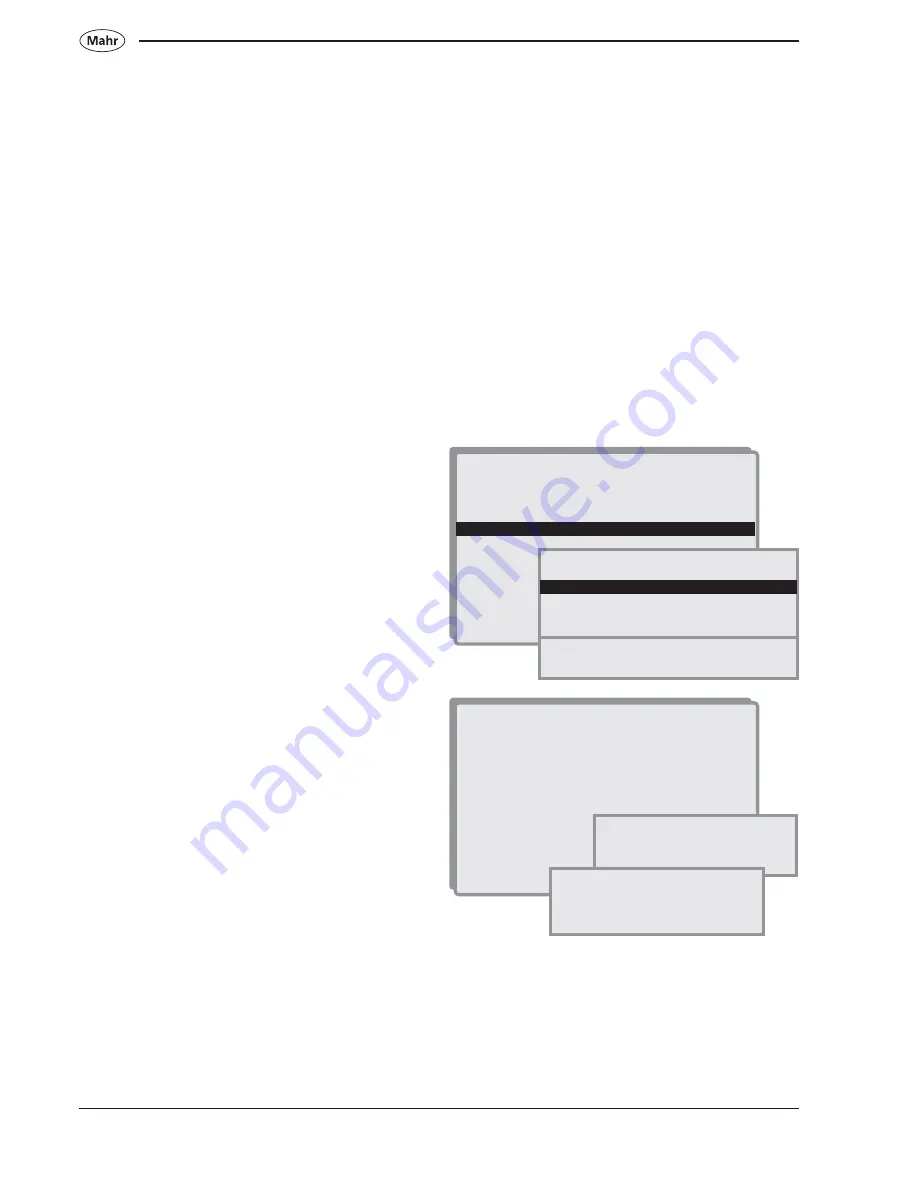
124
Mahr GmbH • Digimar 817 CLM
8.6
Pareto menu
A
Pareto chart
is a special type of bar chart where the
values being plotted are arranged in descending order.
The left vertical axis shows the larger values and the
right vertical axis indicates the smaller values. The
pareto chart is named after the Italian economist
Vilfredo Pareto. They are used in statistics and other
areas such as quality assurance.
Definition
The pareto chart is based upon the pareto principle,
which states the most problems (80%) are attributed to
only a few causes (20%). It is a bar chart where the
values being plotted are arranged in descending order.
See section Pareto distribution.
Intention
With the aid of the pareto - diagram many possible
causes of a problem, such as those that have the
largest influence can be filtered out, their importance to
causing a problem can be read directly from the
diagram.
Procedure
At the first the problem must be specified,
subsequently, the categories for possible error and/or
causes are to be determined. These can be found by
brainstorming or on empirically established values.
Additionally, a quantity must be determined, with which
to clarify the effects of the given problem, the most
common sizes are the frequency of the occurrences
and the frequency evaluated against costs (number
multiplied by the rate). In order to create a pareto
diagram, the absolute frequency of each error category
percentage has to be determined; in addition the costs
per category are calculated. The categories are sorted
in a descending order according to their meaning and
indicated on the horizontal axis from left to the right.
Above each error category is a bar whose height
determines the frequency of the occurrences.
Reject and rework can be shown in weighted pareto
charts according to e.g. frequency and cost. From
practical experience, we know that most quality
deficiencies arise from very few sources. It is therefore
useful to eliminate the sources of the problems first
and then to turn to any quality problems, which still
exist.
Pareto charts are computed on the basis of measuring
values measured and saved with a measuring program
and on the chosen selection criteria.
1. <-_______
2. Enter production data text
3. x-bar S/R charts configuration
4. Menu Histogram
5. Menu x-bar S-charts
6. Pareto chart menu
Statistic menu
PRG1
09:57
05/Sep/06
40 1
40/5000 read.
1/50 blocks
1/40 files
1. <-_______
2. Pareto chart parameters
3. Display pareto chart
4. Display weighed pareto chart
5. Print out pareto chart
6. Print out weighed pareto chart
7. Selection criteria
Number of classes
8
1. <-_______
2. All data
3. Attribu. data only
4. Measured data only
Содержание Digimar 817 CLM
Страница 8: ...8 Mahr GmbH Digimar 817 CLM 1 2 Unpacking 1 2 N I C K L M O P Q...
Страница 10: ...10 Mahr GmbH Digimar 817 CLM 5 350 mm 25 kg 600 mm 30 kg 1000 mm 35 kg...
Страница 11: ...11 Mahr GmbH Digimar 817 CLM 6 45 7 8 90...
Страница 12: ...12 Mahr GmbH Digimar 817 CLM 9 11 G H 10 12 13 M...
Страница 13: ...13 Mahr GmbH Digimar 817 CLM B 3x L M 19 17 18 P D E K N 14 15 16...
Страница 14: ...14 Mahr GmbH Digimar 817 CLM 100 240 V 50 60 Hz I 12 h 21 22 Euro US UK 20 23...
Страница 152: ......
















































